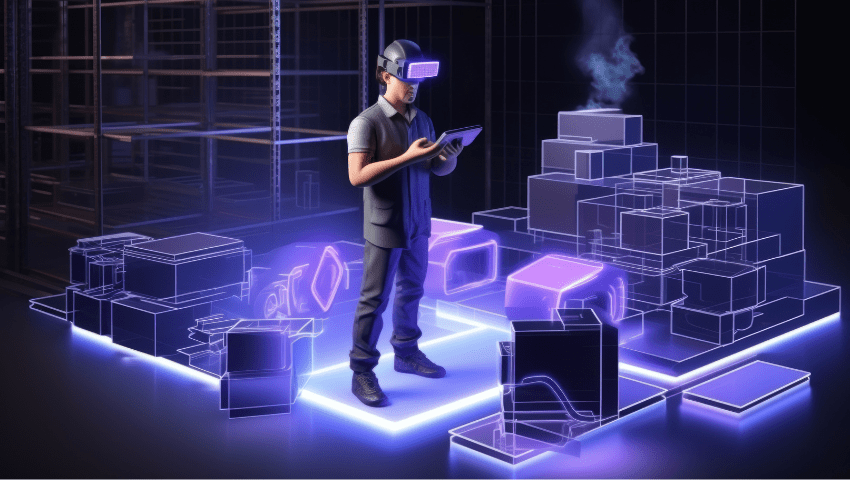Lighting is one of the most critical aspects of creating immersive and visually compelling games in Unity. Whether you’re working on a stylized 2D platformer or a hyper-realistic 3D environment, mastering Unity’s lighting system can significantly enhance your game’s aesthetic and mood. In this guide, we’ll explore the fundamentals of lighting in Unity, key techniques, and how to use lighting effectively in your projects.
“Lighting in game development is crucial for creating mood and atmosphere, guiding players, and enhancing realism. It sets the tone, whether eerie or cheerful, and subtly directs players through the environment. Proper lighting also highlights textures and details, making the game world feel more immersive and authentic.”Lighting serves several essential purposes in game development:
- Mood and Atmosphere: It sets the tone of your game, whether it’s eerie, cheerful, or dramatic.
- Guiding the Player: Well-placed lighting can subtly direct players where to go.
- Realism and Immersion: Proper lighting techniques make environments feel authentic.
- Highlighting Details: It enhances textures, materials, and models in your scene.
Types of Lighting in Unity
Unity provides several types of lights to cater to different use cases:
- Directional Light:
- Mimics sunlight.
- Illuminates all objects in the scene equally.
- Commonly used for outdoor environments.
- Point Light:
- Emits light in all directions from a single point.
- Ideal for light sources like lamps or candles.
- Spotlight:
- Emits a cone-shaped beam of light.
- Useful for flashlights or focused light effects.
- Area Light:
- Emits light from a rectangular surface.
- Available in the High Definition Render Pipeline (HDRP).
- Ambient Light:
- Provides general lighting for the scene.
- Configured in the Lighting Settings.
Real-Time vs. Baked Lighting
Unity offers two main types of lighting:
- Real-Time Lighting:
- Calculated and updated every frame.
- Suitable for dynamic scenes where lights or objects move frequently.
- Can impact performance if overused.
- Baked Lighting:
- Pre-calculated and stored in lightmaps.
- Ideal for static environments to optimize performance.
- Requires UV maps for proper lightmap generation.
Global Illumination (GI)
Global Illumination simulates the way light bounces off surfaces, creating more realistic lighting:
- Precomputed Realtime GI:
- Calculates indirect lighting dynamically.
- Suitable for semi-dynamic scenes.
- Baked GI:
- Static and precomputed.
- Efficient for scenes with minimal dynamic changes.
- Lighting Window:
- Access via Window > Rendering > Lighting.
- Configure environment lighting, reflections, and lightmaps.
- Light Probes:
- Capture and interpolate lighting information for dynamic objects.
- Useful for blending dynamic objects with baked lighting.
- Reflection Probes:
- Capture the environment for accurate reflections.
- Essential for metallic and reflective materials.
- Post-Processing:
- Enhance lighting with effects like bloom, color grading, and ambient occlusion.
- Use HDR Lighting:
- High Dynamic Range (HDR) enhances brightness and contrast.
- Combine with post-processing for stunning results.
- Add Shadows:
- Enable shadows for lights to add depth.
- Use soft shadows for realism and hard shadows for stylized effects.
- Simulate Day/Night Cycles:
- Use directional lights with dynamic intensity and color changes.
- Adjust ambient lighting for different times of day.
- Balance Light Intensities:
- Avoid overexposing or underexposing your scene.
- Use a combination of main and fill lights for balanced illumination.
Performance Optimization Tips
- Limit Real-Time Lights:
- Use baked lights where possible to reduce overhead.
- Optimize Lightmaps:
- Reduce lightmap resolution for distant objects.
- Use compression to save memory.
- Culling and Layers:
- Assign lights to specific layers to avoid unnecessary calculations.
- Use LODs:
- Combine lighting optimization with Level of Detail (LOD) systems.
Conclusion
Lighting is both an art and a science in Unity. By understanding the different types of lights, global illumination, and optimization techniques, you can create visually stunning and efficient games. Experiment with lighting setups and don’t forget to leverage Unity’s powerful tools like the Lighting Window and Post-Processing Stack to push your visuals to the next level.
Have any tips or tricks for lighting in Unity? Share your thoughts in the comments below!

